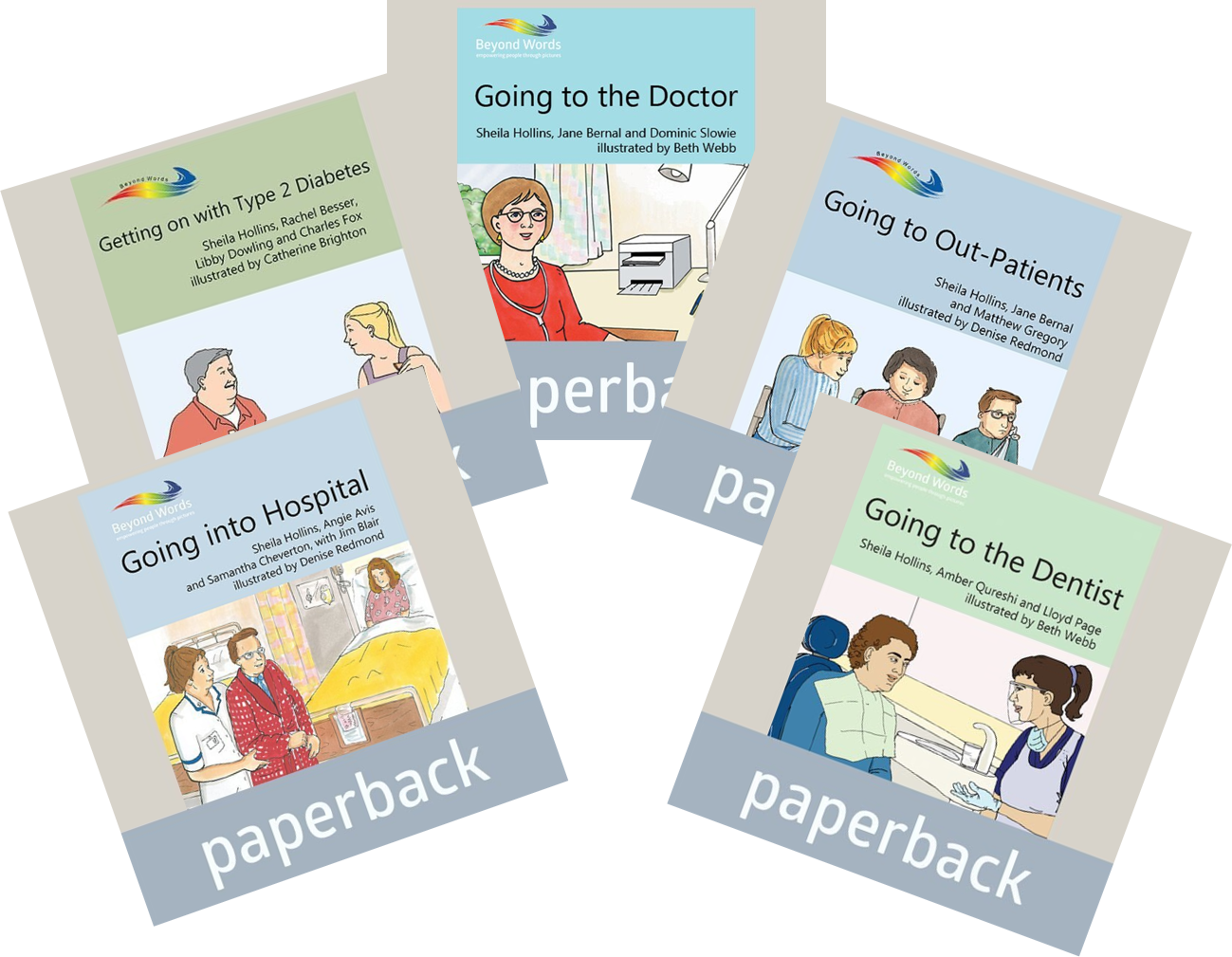Professor Sheila Hollins founded Books Beyond Words to assist her son…
Professor Sheila Hollins founded Books Beyond Words to assist her son, who has a learning disability. The word-free books enable people with learning difficulties to express their fears, worries and why they are hurting inside, as well as to understand the feelings they experience. All the pictures used in the books are tested by people who find pictures easier than words, to make sure they are easy to understand.
Books Beyond Words are also ideal for people on the autism spectrum. According to Beyond Words Director Professor Barry Carpenter, when people on the autism spectrum become overwhelmed, hearing is the first sense to shut down and sight is the last sense to shut down. So, the images in the Books Beyond Words can be most helpful in understanding situations and reducing anxiety.
Removing barriers
(originally published by Books Beyond Words)
For someone who struggles with words, there are a lot of barriers to getting the right health or social care and support. Even when a person with a problem reaches someone who can help, like a doctor, a social worker or a therapist, there can be communication problems and anxieties on both sides.
By telling the whole story in pictures, each Books Beyond Words narrative gives people the chance to work together and explore different types of situations:
- everyday opportunities and experiences
- things that are about to happen, like going to hospital or appearing in court
- life decisions, like having a relationship or agreeing to an operation
- things that have already happened, like abuse or losing someone you love
How do you read a wordless therapy book?
There is no right or wrong way to read a Beyond Words book. Remember it is not necessary to be able to read the words.
1. Some people are not used to reading books. Encourage the reader to hold the book themselves, to turn the pages at their own pace, and to read the story they see in each picture.
2. Whether you are reading the book with one person or with a group, encourage them to tell the story in their own words. You will discover what each person thinks is happening, what they already know, and how they feel. You may think something different is happening in the pictures yourself, but that doesn’t matter. Wait to see if their ideas change as the story develops. Don’t challenge the reader(s) or suggest their ideas are wrong.
3. Some pictures may be more difficult to understand. It can help to prompt the people you are supporting, for example:
- I wonder who that is?
- I wonder what is happening?
- I wonder what he or she is doing now?
- I wonder how he or she is feeling?
- Do you feel like that? Has it happened to you/ your friend/ your family?
4. You don’t have to read the whole book in one sitting. Allow people enough time to follow the pictures at their own pace.
5. Some people will not be able to follow the story, but they may be able to understand some of the pictures. Stay a little longer with the pictures that interest them.
What are Books Beyond Words? By Professor Sheila Baroness Hollins
For an example of how the books can be utilized please see The Drama Group co-authored by actor Hugh Grant being rehearsed below:
Read more:
Article by founder Sheila Hollins: ‘People with learning disabilities must be put at the centre of their care’
Understanding, Emotions and Books Beyond Words: Aneuroscience perspective co-authored by Prof Barry Carpenter
Book clubs for people with intellectual disabilities co-authored by Prof Barry Carpenter
Books Beyond Words are available individually or in sets please see catalogue here








